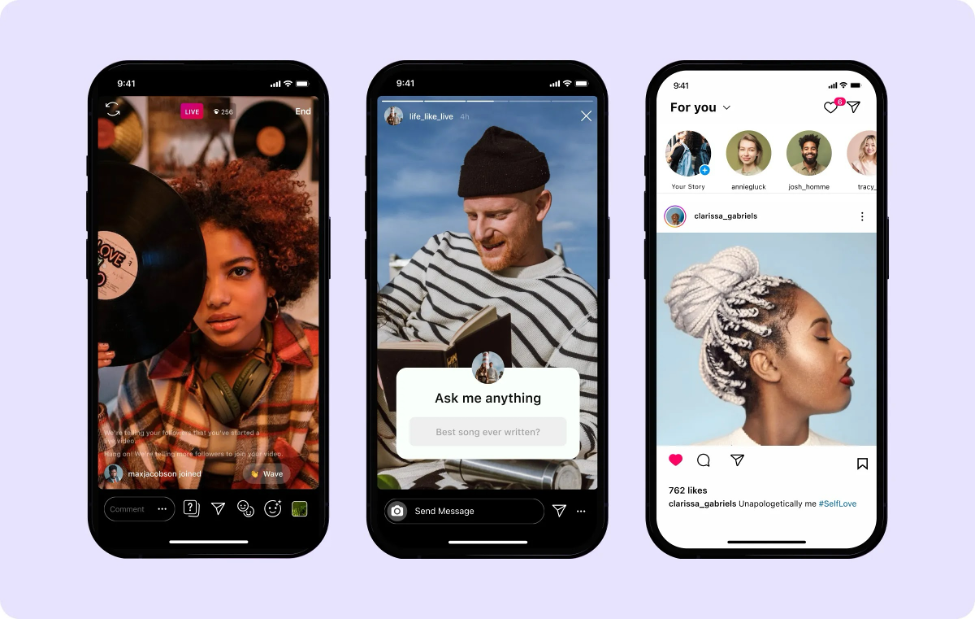There’s a reason why some Android apps feel sleek, load in a blink, and stay loyal on low-end phones, while others puff up like a Thanksgiving turkey and crash at the worst moment. After nearly two decades watching the evolution of Android development, I can safely tell you: it’s not just about talent — it’s about experience, a little humility, and knowing that sometimes, less really is more.
At Web Design Columbia (WDC), we’ve been in the trenches since the Motorola Droid days, back when 512MB of RAM felt like a luxury and apps proudly weighed in at a “whopping” 10 MB. Over the years, coding trends changed, flashy frameworks came and went, but one secret never did: an app’s weight doesn’t define its greatness — its architecture, optimization, and scalability do. Today, from right here in the thriving tech scene of Columbia, South Carolina, we’re seeing a resurgence of the old-school wisdom that “lean” apps win in performance and user loyalty.
Let’s take a deep dive into the hidden world of professional Android development, share a few jokes at the expense of bloated apps, and explore how global practices — and Columbia’s local mobile talent — are quietly leading a smarter, faster movement.
Why Your App Probably Doesn’t Need to Be 100MB
First, let’s clear the air. Not every app needs to squeeze into a 1MB package — unless you’re Fortnite or some high-end 3D mobile game, there’s rarely a good reason for your everyday app to creep past 50 MB.
In fact, according to a 2024 report from Sensor Tower, apps that weighed less than 30MB had a 32% higher retention rate than apps over 100 MB. Why? Because the global market, especially regions like India, Africa, and parts of South America, still heavily relies on mid-tier or budget Android devices with limited storage.
According to Statista’s 2023 data, 41% of Android users in the U.S. still operate devices with only 64GB of total storage. How much room is left for your bloated app after system files, photos, videos, and TikTok binge sessions?
In Android development in Columbia, smart businesses understand this storage squeeze. They’re asking for efficient apps that respect their users’ devices and realities. And honestly, it’s about time.
Modularization: Breaking Apps Into Smarter Pieces
Here’s one big secret veteran developers whisper behind closed Slack channels: modularization.
Instead of cramming the entire kitchen sink into one monstrous APK file, experienced developers split the app into multiple smaller modules. This is like building a LEGO set, where each block is only loaded when needed.
With Android App Bundles (.aab), which officially replaced APKs as the standard format in August 2021, developers can now tailor which parts of an app are downloaded to a device. For example, if you need only the English language pack, only that module is downloaded. Similarly, only that bit is installed if you need only the tablet interface.

Global companies like Spotify and Airbnb pioneered aggressive modularization early on. Now, even smaller shops, such as those offering Android development in Columbia, are integrating modular techniques to keep apps light, nimble, and friendly to user storage.
The downside? Modularization adds complexity to your build system. It requires rigorous dependency management, careful coding discipline, and sometimes slows down developer onboarding. But trust me—the users don’t care how hard it was. They’ll care that the app doesn’t choke their storage.
The Death of Monolith Apps (And Why Some Still Build Them)
Let’s talk real. Even though modularization and lightweight app strategies are becoming best practices, there’s still a global epidemic of massive, clunky monolith apps. You can blame bad planning, corporate silos, or just the sheer inertia of “we’ve always done it this way.”
According to Android Authority’s latest study, more than 67% of apps over 150MB have major abandonment issues within the first week. Users install, realize the app is hogging storage or draining battery, and delete it without remorse.
At Web Design Columbia, we’ve had a front-row seat to this trend. When businesses reach out after investing heavily in offshore teams or template mills, their most common complaint isn’t even bugs — it’s bloat. By applying nearly twenty years of lessons, we help them trim the fat, optimize resource loading, implement lazy loading for images and assets, and streamline codebases. In a vibrant tech hub like Columbia, this attention to mobile efficiency isn’t just lovely — it’s survival.
For those looking for technical mobile development insights, our Columbia-based team knows that sleek and smart will always beat shiny and heavy.
Android Dev Tools That Are Changing the Game (But Only If You Know How to Use Them)
In the world of [Android development in Columbia], new toys are dropping every year. But as every veteran knows, a tool is only as good as the hand that wields it.
Jetpack Compose is a major example. Google’s modern UI toolkit has been a game-changer, simplifying the creation of dynamic user interfaces without XML madness. According to Google’s 2024 developer survey, over 53% of new Android apps now use Jetpack Compose, up from just 24% two years ago.
While Compose reduces boilerplate code and speeds up UI development, it isn’t all rainbows. Early versions were notoriously buggy, and even now, heavy recomposition cycles can bog down poorly optimized apps. As seasoned developers in Columbia have learned, mastering Compose is an art—one that demands understanding of under-the-hood behavior, not just copying and pasting tutorials.
Another major game-changer is Kotlin Multiplatform Mobile (KMM), which allows developers to share business logic between Android and iOS. While it’s an alluring promise for budget-conscious startups, KMM is still maturing. It’s fantastic for backend services and data layers, but not a silver bullet for all UI work—a fact that many less-experienced teams gloss over.

At WDC, we love leveraging new tools, but we never let the tool dictate the project. The best mobile apps—whether born in Silicon Valley or in the growing creative labs of Columbia, South Carolina—result from careful selection, experience-driven caution, and sometimes, a dash of good old stubbornness.
Affordability Isn’t Just About the Price Tag — It’s About Building Right
Let’s talk money, because let’s be honest, that’s often where the conversation starts.
One of the key reasons companies across South Carolina — and even nationally — reach out to Web Design Columbia is that affordable pricing doesn’t mean cutting corners. Thanks to almost two decades of experience, WDC builds it right the first time. That means no paying twice because your first dev team used the wrong framework, over-engineered features you didn’t need, or forgot about modularity and scalability.
There’s a very real economic advantage to working with local teams specializing in Android development in Columbia. You get strategic guidance that comes only from long-term experience. You get codebases that are easy to maintain, upgrade, and most importantly, built to last.
Remember: Cheap work is expensive. Affordable expert work saves you thousands — and probably your sanity.
When Speed Becomes Your Best Marketing Tool
Here’s a truth that would make any veteran Android developer nod: the faster your app is, the less marketing you need to convince users to stay. In 2024, Google’s internal Android performance study revealed that apps loading in under three seconds see 39% more daily active users than those with longer load times.
When we talk about Android development in Columbia, one thing becomes clear: users here expect instant gratification, just like New York, London, or Tokyo users. No one cares about the pretty splash screen if it stays stuck for 10 seconds. At Web Design Columbia, speed isn’t just a tech metric; it’s an emotional connection. You’re telling your users, “We respect your time.”
But you don’t sprinkle on optimization at the end like powdered sugar on a donut. It starts with ruthless attention to database queries, reducing unnecessary network calls, minimizing asset sizes, and smart caching strategies. Tools like Firebase Performance Monitoring and Android Vitals allow developers to catch performance bottlenecks early, but only if they’re savvy enough actually to read those reports, not just generate them.
Of course, over-optimizing can backfire. Apps can become so aggressive in cutting corners that they lose key features, leading to a poor user experience. Some global startups became infamous for releasing ‘lite’ versions of their apps that were so stripped down that they felt like glorified web pages. The challenge is finding the balance, a task that experienced teams like ours in Columbia have turned into an art form.
Real-World Lessons From Columbia’s Mobile Scene
Let me share a quick behind-the-scenes story in Columbia, South Carolina.
One of our clients approached us with an app idea targeting local small businesses, aiming to offer a loyalty rewards program. They initially worked with a freelance dev who handed them a behemoth of an app: 180MB download, multiple unnecessary libraries, bloated animations, and an onboarding flow that could’ve been a short novel. It was a classic case: “it looks pretty on Dribbble but dies in real life.”
When Web Design Columbia took over, we re-architected the project. We stripped away dead-weight libraries, introduced modularization, optimized images through WebP formats (saving nearly 30% of image load sizes), and migrated heavy native animations to lightweight Lottie animations. Result? A sparkling 28MB app, cutting the original size by over 80%, with noticeably faster load times.
The best part wasn’t just technical. User acquisition improved by almost 55% because users didn’t have to stare at a loading bar anymore.
This experience isn’t an outlier. It’s a pattern we’re seeing increasingly in Android development in Columbia: Businesses realize smarter apps win hearts, not just bigger ones.
Where Most Mobile Developers Still Get It Wrong
Despite all the fancy frameworks, cloud integration promises, and AI-augmented code generation (hello, GitHub Copilot), many mobile developers still fall into the same traps.
They blindly trust frameworks without understanding the underlying Android lifecycle. They optimize for high-end phones with blazing CPUs, but forget that over 70% of the global Android market runs on mid-tier or low-end devices. They focus on shipping “something” fast rather than shipping something good.
One global example is the ill-fated Android release of Snapchat back in 2017. They rewrote the app from scratch but forgot to optimize it for anything less than flagship phones. The brutal backlash led to millions of frustrated users and a measurable hit on their active user count.
There’s less room for such missteps in Columbia, where the tech community is tight-knit but fiercely competitive. The clients here expect real results, and word travels fast. At Web Design Columbia, we see the difference firsthand. Clients come to us not just for the code, but for the thinking, the strategy, the “we’ve made these mistakes before — and learned” approach that only seasoned developers can offer.
The Unseen Work Behind “Good Enough” Apps
When you open a mobile app and everything just… works, it feels like magic. But trust me — that’s the result of hundreds, maybe thousands, of micro-decisions you’ll never see.
Deciding when to use local caching versus server-side refreshes. Picking RecyclerViews over ListViews for performance and implementing custom memory leak checks using LeakCanary. Refactoring code obsessively to make sure each function does one thing, and does it well.
We often emphasize proactive crash management as a critical piece of Android development in Columbia. No, it’s not sexy. You won’t win design awards for a flawless crash report integration. However, integrating crash analytics platforms like Firebase Crashlytics or Sentry from Day One saves months of user frustration later.
And here’s a spicy fact: according to Business of Apps, apps that proactively fix crashes within 14 days retain 28% more users than apps that leave issues lingering. Think about that next time you click “force close” for the third time.
At WDC, we’re fanatics about these invisible wins. They don’t always show up in the pitch decks, but they show up where it matters — user reviews, App Store ratings, and brand loyalty.
Why Columbia’s Mobile Future Looks Bright (And Affordable)
One thing is sure: the future of mobile apps is no longer locked up in Silicon Valley. Cities like Columbia, South Carolina, are carving out their own niche with highly skilled, affordable, and experienced Android developers who bring global best practices to local businesses.
Companies working with Web Design Columbia get more than just an app—they get a partner who understands why staying under 50MB matters, why clean architecture saves you tens of thousands down the road, and why paying for experience upfront beats paying for regret later.
And affordability isn’t just about hourly rates. It’s about building something that lasts and doesn’t require monthly surgery to stay alive. That’s a promise few can make, but we proudly stand behind it after nearly twenty years of riding the rollercoaster of mobile tech evolution.
Whether it’s understanding modularization inside out, optimizing every API call, or squeezing every kilobyte from your assets, the team here at WDC knows what it takes. And hey, we’re still nerdy enough to get excited when we knock 5MB off a build.
If you want to explore how Columbia’s best keep the mobile world lean, fast, and affordable, check out our great mobile app development approach — you might just be surprised at how far the right mindset can take you.
Wrapping It Up
The biggest secret seasoned Android developers know is this: respect the user’s time, device, and expectations, and you’ll win. It’s not about flashy features no one asked for. It’s not about reinventing the wheel just because a new JavaScript framework is trending on Twitter.
It’s about fundamentals done right—clean, optimized code. Strategic architecture. And yes, an obsessive refusal to let an app grow into a 100MB monster without good reason.
At Web Design Columbia (WDC), right here in Columbia, South Carolina, we live by those principles daily. After almost two decades in the game, we’re still learning, optimizing, and keeping apps light, fast, and, most importantly, user-friendly.
Because of some secrets? They’re too good to forget.








